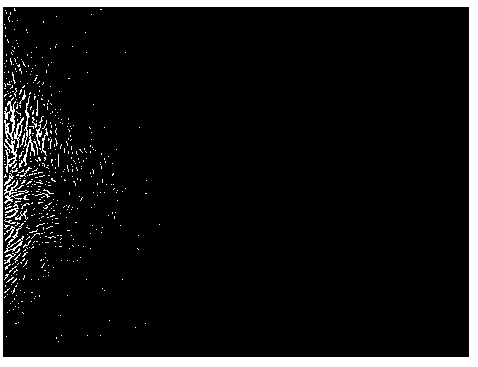Methods for restoring dryness or proliferative ability of hair follicle-derived cells
A technology of proliferative ability and dermal papilla cells, which is applied in the field of restoring hair follicle-derived cell stemness or proliferation ability, can solve the problems of human body side effects and insignificant effects, and achieve the goal of solving hair loss, restoring hair follicle-derived cell stemness, and broad application prospects Effect
- Summary
- Abstract
- Description
- Claims
- Application Information
AI Technical Summary
Problems solved by technology
Method used
Image
Examples
Embodiment 1
[0033] A method for restoring stemness or proliferative ability of hair follicle-derived cells, comprising the following steps:
[0034] S1. Cut up the umbilical cord from which the arteries and veins have been removed, and wash thoroughly;
[0035] S2. Add low-sugar DMEM medium containing bovine serum and green chain double antibody, place in CO 2 Cultivate in the incubator, change the medium every 3 days;
[0036] S3. After the fusion of the mesenchymal stem cells reaches 80%, digest with trypsin and carry out subculture;
[0037] S4. Passage the mesenchymal stem cells to the fifth generation, and when the cell fusion reaches 80%, replace the medium without exosome serum to continue culturing;
[0038] S5. Collect the cell supernatant, centrifuge to remove cells or cell debris, and extract exosomes from mesenchymal stem cells by ultracentrifugation;
[0039] S6. Using the improved two-step enzymatic method to separate and cultivate the dermal papilla cells, the specific s...
Embodiment 2
[0046] A method for restoring stemness or proliferative ability of hair follicle-derived cells, comprising the following steps:
[0047] S1. Cut up the umbilical cord from which the arteries and veins have been removed, and wash thoroughly;
[0048] S2. Add low-sugar DMEM medium containing bovine serum and green chain double antibody, place in CO 2 Cultivate in the incubator, change the medium every 3 days;
[0049] S3. After the fusion of the mesenchymal stem cells reaches 80%, digest with trypsin and carry out subculture;
[0050] S4. Passage the mesenchymal stem cells to the fifth generation, and when the cell fusion reaches 80%, replace the medium without exosome serum to continue culturing;
[0051] S5. Collect the cell supernatant, centrifuge to remove cells or cell debris, and extract exosomes from mesenchymal stem cells by ultracentrifugation;
[0052] S6. Using the improved two-step enzymatic method to separate and cultivate the dermal papilla cells, the specific s...
Embodiment 3
[0059] A method for restoring stemness or proliferative ability of hair follicle-derived cells, comprising the following steps:
[0060] S1. Cut up the umbilical cord from which the arteries and veins have been removed, and wash thoroughly;
[0061] S2. Add low-sugar DMEM medium containing bovine serum and green chain double antibody, place in CO 2 Cultivate in the incubator, change the medium every 3 days;
[0062] S3. After the fusion of the mesenchymal stem cells reaches 80%, digest with trypsin and carry out subculture;
[0063] S4. Passage the mesenchymal stem cells to the fifth generation, and when the cell fusion reaches 80%, replace the medium without exosome serum to continue culturing;
[0064] S5. Collect the cell supernatant, centrifuge to remove cells or cell debris, and extract exosomes from mesenchymal stem cells by ultracentrifugation;
[0065] S6. Using the improved two-step enzymatic method to separate and cultivate the dermal papilla cells, the specific s...
PUM
 Login to View More
Login to View More Abstract
Description
Claims
Application Information
 Login to View More
Login to View More - R&D
- Intellectual Property
- Life Sciences
- Materials
- Tech Scout
- Unparalleled Data Quality
- Higher Quality Content
- 60% Fewer Hallucinations
Browse by: Latest US Patents, China's latest patents, Technical Efficacy Thesaurus, Application Domain, Technology Topic, Popular Technical Reports.
© 2025 PatSnap. All rights reserved.Legal|Privacy policy|Modern Slavery Act Transparency Statement|Sitemap|About US| Contact US: help@patsnap.com

